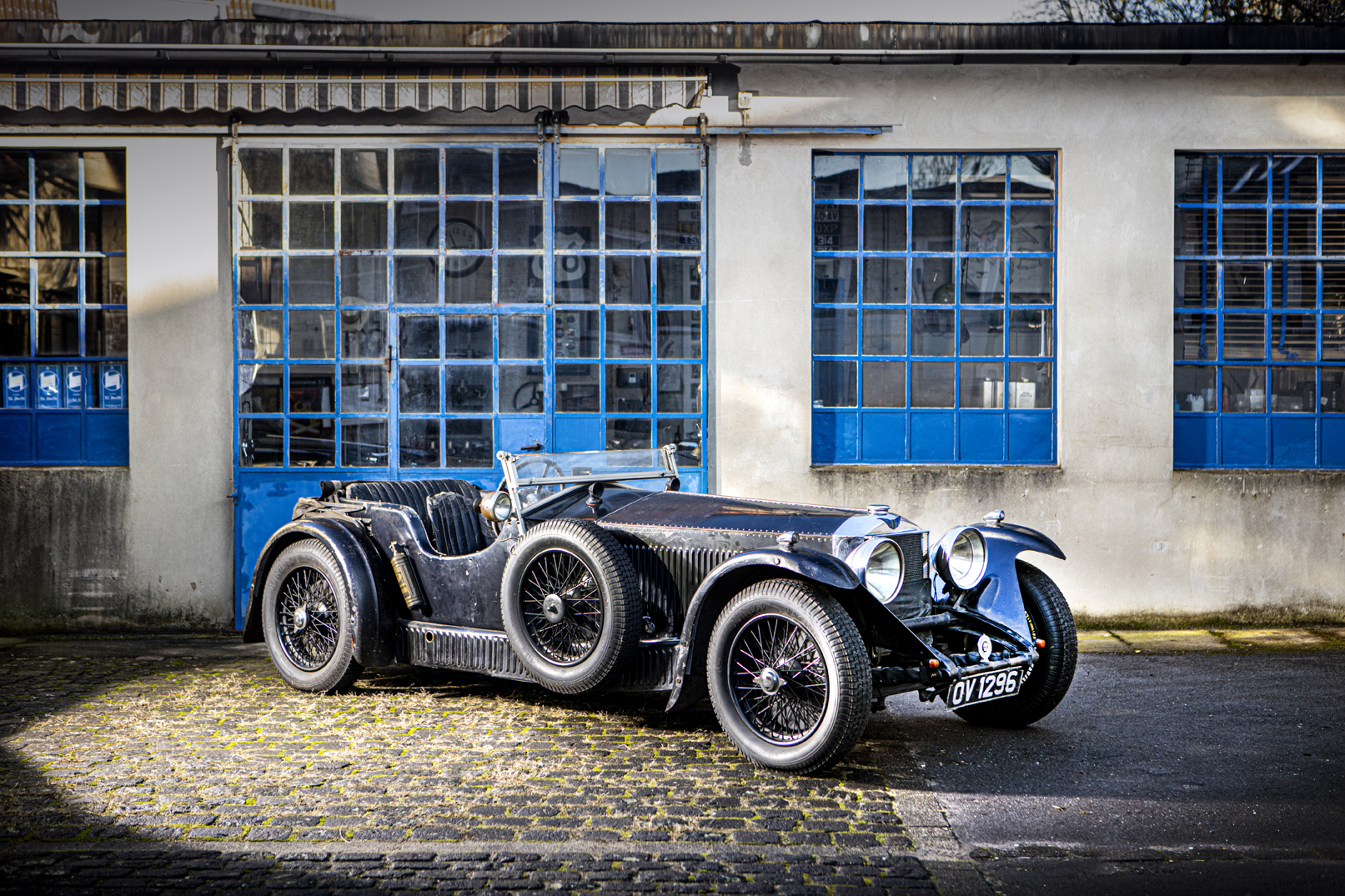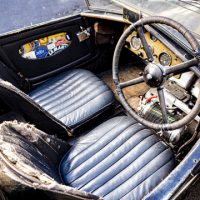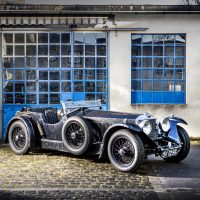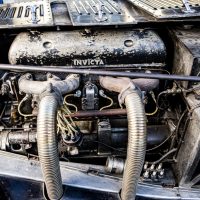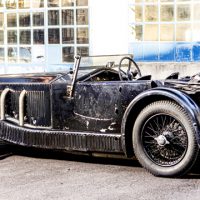SCM Analysis
Detailing
| Vehicle: | 1931 Invicta 4½-Litre S-Type Low-Chassis Sports “Scout” |
| Years Produced: | 1931–33 |
| Number Produced: | 75 (or maybe 77, depending on whom you ask) |
| Original List Price: | N/A |
| SCM Valuation: | $850,086 |
| Tune Up Cost: | $250 |
| Chassis Number Location: | Stamped into engine information plate on right side of rocker cover |
| Engine Number Location: | Stamped into right engine bearer |
| Club Info: | The Invicta Car Club |
| Website: | http://www.theinvictacarclub.org |
| Alternatives: | 1927–31 Bentley 4½ Litre, 1931–35 Talbot 105, 1936–37 Lagonda LG45/Rapide |
| Investment Grade: | A |
This car, Lot 232, sold for €1,610,000 ($1,771,483), including buyer’s premium, at Bonhams’ auction in Paris, France, on February 8, 2020.
If imitation is the sincerest form of flattery, then the number of Low-Chassis replicas is an indicator of how highly regarded the Invicta is as the epitome of the English sporting automobile.
In the same way that many saloon Bentleys have been chopped and rebodied over the decades as Le Mans lookalikes, several Invicta saloons, sharing major components, have been modified into copies of the rakishly low-slung sportster. Other cars have been built up from parts.
But our subject car is the real thing — and probably the most original left on the planet.
Not a long time — but a good time
As the catalog had it: “The Low-Chassis Invicta S-type is now regarded as one of the most desirable pre-war sports cars, sought after by collectors for its exceptional driving abilities, style and sheer presence. The Low-Chassis has an enviable reputation amongst connoisseurs, and examples are to be found in some of the most important private collections.”
Noel Macklin, a former Captain in the Royal Horse Artillery (invalided out in 1915), had a vision: He wanted to make a car with the quality and reliability of a Rolls-Royce and performance that would better a Bentley.
He set up the Invicta company at his home in Cobham, Surrey, in 1925 with financial backing from Oliver Lyle of Tate and Lyle. Invicta produced a range of cars, and the 4½-Litre S-type was launched at the London Motor Show in 1930.
It was similar to the conventionally tall A-type, but the underslung chassis (designed by Reid Railton, the man behind Malcolm Campbell’s Bluebird speed-record cars) gave the car a very low profile — and the name Low Chassis.
The torquey 4½-liter Meadows engine is the same unit that went into Lagondas.
About half the S-type cars had slimline tourer bodies by Carbodies or Vanden Plas, and the rest were drophead or fixed-head coupes, with a lower 3.9:1 axle ratio.
Macklin was so confident in the cars that he offered a Rolls-Royce-style three-year guarantee.
Plenty of competition
The Austrian Alpine Trail was a suitably high-profile test, and Donald Healey (yes, that Donald Healey, who used the same underslung chassis arrangement on his 100 sports car) twice won a Coupe des Glaciers for Invicta — as well as the 1931 Monte Carlo Rally.
Later, the S-type took the International Sports Car Record at Shelsley Walsh hillclimb and the Mountain Circuit lap record at Brooklands in 1931 and 1932, with Raymond Mays. Talk about the right names…
Somewhere between 56 and 68 of the 75 (or so: some say 77) S-types built are known to survive. Some of the cars participating in Invicta Car Club events in the 1930s were named after ships of the Royal Navy beginning with S, and some have been named more recently.
A long history
Our car, S75, is “Scout,” delivered new in 1931 to Lord Ebury. Henry Pether, its third owner, bought it in 1938 and kept it for almost 60 years before selling to Martin Kölnberger of Aachen, Germany, in February 1995.
The deal included a race-spec engine (LG6451S4), which was rebuilt by a specialist in the 1990s and is currently in the car, while the original engine (7478) is included in the sale.
The current vendor purchased S75 from Mr. Kölnberger in July 2009, had the gearbox rebuilt in 2010 and registered it in his daughter’s name in 2016. It still wears its original U.K. registration number: OV 1296.
An amazing car in a grand setting
On display in the giant birdcage of the Grand Palais, it was simply captivating, sharing the no-nonsense aura of a supercharged Mercedes and some of its proportions — but much lower. These cars are nearer the size of an SS Jaguar than a W.O. Bentley, and they are probably tougher than either.
The deep, louvred side valances fit in well here, giving the car an impregnable look.
“Patina” is probably too kind a description of this car. “Lived in” would be more like it, but it gives the car an unrepeatable aura of having seen a bit of life. The 89-year-old paint is fantastically flat, chipped and flaking, and the seat leather can only be described as distressed.
The original Carbodies maker’s plate on the scuttle looks as if it has never been disturbed, and all the original brass and bronze fittings remain on the engine, dulled by nine decades of respectfully leaving it alone.
The inner door panels are lined in event stickers — testimony to how the car has been enjoyed, including the Le Mans Classic, where it hit 115 mph with the windscreen folded. The original fixed windscreen is included with the car.
There’s a period brass fire extinguisher clipped behind the driver’s door, but inside, a modern high-capacity bottle sits on the floor under the driver’s knees. The radiator plating still shines. The lovely multi-hued enamel radiator emblem survives well: I’ve never seen a chipped one.
Discreet flashing indicators have been added at some point.
Bonhams knew this was a special car and placed some restrictions on bidding. Special formalities were required, meaning no online offers — you needed to be there in person.
With the going rate for a nice original Low Chassis Invicta around £800k — or about two 4½ Litre Bentleys — someone really wanted this and paid almost double the market price.
Put that down to the astoundingly unrepeatable condition. As we’ve been fond of saying these past few years, they’re only original once, and this car epitomized that quality like no other. ♦
(Introductory description courtesy of Bonhams.)
